“Life is made up of sobs, sniffles, and smiles, with sniffles predominating.”
― O. Henry, The Gift of the Magi
Introduction
Buddha lived sometime during the period 563-483 BCE. Only isolated events from the period before he attained enlightenment have been preserved. Also, some parts of the stories about his early life might be based on traditions rather than verifiable history. It was believed that Buddha was born a prince in Lumbinī, Nepal, in the Terai lowlands close to the foothills of the Himalayas. However, archaeological evidence unearthed later apparently indicate that Buddha might have been born in Kalinga in the State of Orissa, India.
Buddha was born as Siddhartha Gautama. Siddhartha means “one who has achieved his aim.” Gautama was his clan name. He was sometimes referred to as Śakyamuni meaning, “the sage of the Śakyas.” The name Śākya is derived from the Sanskrit word śakya, which means “the one who is capable“. The Sakyas were a clan of the Vedic period (1750–500 BCE). His father, Suddhodana, had ruled the Śakya kingdom from its capital Kapilavastu. Queen Mahamaya was the mother of Siddhartha.
Siddhartha grew up amid the wealth and luxury of the palace. It was prophesied that he would become either a great king or a great sage. The king wanted his son to become the future ruler of his kingdom rather than a mendicant sage. So he kept him within the palace walls in the hope that he would be captivated by the charm, power, and opulence of royalty.
At the age of sixteen, Prince Siddhartha was married to Yashodhara, a charming princess. The couple was later blessed with a son whom they named Rahula. The family lived in royal comfort and joy. Since Siddhartha had no contact with the world outside the palace walls, he apparently believed that the world as a whole was as beautiful, comfortable and mirthful as a king’s palace.
Then, one day the prince went out visiting the city. His father had arranged to prevent the prince from seeing the woes of the real world. However, he chanced upon people who were suffering. He made more such furtive outings and eventually realized the fundamental realities of human existence. People fall sick, get old and eventually die. The truth that people are born only to live in pain and hardship and to die miserably moved him. He decided to discard his princely life of luxury and comfort once for all. One night, he walked out of the palace gates alone, determined to find a spiritual solution to the problem of human suffering.
He tried to find the underlying cause of the tragic state of human existence. He searched for a path to the cessation of suffering to achieve the state of Nirvana, which is the final liberation from all pains and sufferings of mundane life to achieve a state of enlightenment. From his experiments and experiences, Buddha formulated ‘The Four Noble Truths’ of human existence. He also developed the ‘Noble Eightfold Path’ as a roadmap for moving from the state of ignorance and suffering to a state of enlightenment and ultimate happiness. Thus the whole Buddhist philosophy is pivoted on the ‘Four Noble Truths’ and the ‘Noble Eightfold Path’. This post seeks to discuss some of the basics of the ‘Four Noble Truths’.
The Four Noble Truths
None of us wants to live unhappily. Yet we know that unhappiness is the natural state of our lives. Happiness is more or less just a transient phenomenon in human lives. Joy appears, stays for a brief period only to vanish leaving us in our natural state of unhappiness. Nevertheless, all of us aspire to be happy. So, achieving happiness and overcoming suffering remain the unremitting quest of our lives.
All of us recognize that suffering, which in Buddhism is termed ‘Dukkha’, is the default state of human life. But this state of ‘Dukkha’ must not have arisen just like that. In an earlier post (Albert Einstein Proves Upanishads Right), I had discussed the Buddhist idea of ‘Dependent Origination’. Water becomes ice when atmospheric temperature falls to zero Degree Celsius and it changes into steam when the temperature is raised to 100 Degrees Celsius. Thus, the various forms of water are the effects caused by the changes in the state of atmospheric temperature. This is generally the case with all ‘Originations’. Taking this logic forward, we might say that the state of ‘Dukkha’ must also be the effect of a set of causes and its associated conditions. Now, if we can comprehend and control the causes and conditions that create the state of ‘Dukkha’, we should be able to eliminate them and move into a state of happiness. This is the basic thinking behind the Buddhist concept of ‘The Four Noble Truths’, as follows:
1. The Noble Truth of ‘Dukkha’
2. The Noble Truth of the Cause of ‘Dukkha’
3. The Noble Truth of the End of ‘Dukkha’
4. The Noble Truth of the Path leading to the End of ‘Dukkha’
I do not have the competence (or space here) to discuss the several highly complex interpretations of the Four Noble Truths. My objective here is limited to providing an elementary understanding of the cardinal concepts that is the bedrock of the Buddhist philosophy. Let us briefly discuss the above four noble truths one by one.
1. The Noble Truth of ‘Dukkha’
The ordinary meaning of the Pali word ‘Dukkha’ is pain or suffering. But it is a term loaded with several other meanings. It carries deeper connotations like imperfections, disharmony and the awareness of incompleteness or insufficiency. The word also conveys implications such as attachment to the unpleasant or separation from the pleasant. The term ‘Dukkha’ also is indicative of the sense of disillusionment and discontentment.
It is the basic belief of Buddhism that human existence on this earth is one of ‘Dukkha’. In other words, the current state of our life is one of, imperfections, disharmony, incompleteness, discontentment, insufficiency, and disillusionment. We were born into this world of unhappiness without our consent. And here we find ourselves under the bondage of ‘Dukkha’. Of course, this state might vary in its dimensions and intensities from individual to individual.
According to Buddhism, human beings undergo suffering at four stages or levels. These are the sufferings of birth, sickness, ageing and death. An understanding of these four levels of suffering acts as the catalyst of the spiritual quest for a means for ending all these sufferings. We can see it indicated in the life story of Buddha, which says that Siddhartha caught sight of a sick person, an old person, and a dead person. This led him to think of a spiritual way out of this cycle of the suffering of birth, the suffering of death and the suffering of living.
One might say that the assumption that the present state of human existence is that of ‘Dukkha’ is the offshoot of a pessimistic view of life. But it is actually a realistic way of looking at the human situations. A sick person does not seek cure unless he recognizes the fact of his illness. If a person is ill and continues thinking that he is healthy, it is neither optimism nor pessimism. It is escapism. The sick person is indulging in self-deception. This is bound to have catastrophic consequences.
Think of a sacrificial goat. The goat is well brought up. On the day set for its sacrifice, the goat is given a ceremonial bath. It is then beautifully decked up. It is painted and garlanded. Then it is taken out in a colorful procession. The goat believes that people simply adore it. So the goat is boundlessly happy. It is thrilled by all the attention it receives. It hops and dances with the crowd. But the goat is oblivious of the truth about its situation. It does not know that in a while, it would lie beheaded on the altar of the deity. Of course, even if the goat knew the reality of its situation, it could not have escaped. But for humans, there is a way out, says Buddhism.
Thus, the ‘Noble Truth of Dukkha‘ is that unless we realize the real state of affairs underneath the deceptive glossiness on the outside, no improvements would be possible. Ignoring or being ignorant of the truth would be calamitous. “But no matter how much pleasure we might experience, no matter how successful we might be at dodging pain, the basic problem remains at the core of our being and we continue to move within the bounds of Dukkha”
It is critical for human beings to understand and acknowledge the real state of their imperfections. This is the essence of the Buddhist concept of the first of the Four Noble Truths – the Truth of ‘Dukkha’. Without an understanding of the unvarnished truth of the present state, there could be no attempts to escape from that state. “The stronger and deeper our insight into the suffering is, the stronger the desire to gain freedom from it becomes.”
2. The Truth of the Cause of ‘Dukkha’
Buddhism teaches that ignorance (Avidya) is the root cause of ‘Dukkha’. “As the basic root of dukkha, ignorance is a fundamental darkness shrouding the mind. Sometimes this ignorance operates in a passive manner, merely obscuring correct understanding. At other times it takes on an active role: it becomes the great deceiver, conjuring up a mass of distorted perceptions and conceptions which the mind grasps as attributes of the world, unaware that they are its own deluded constructs”.
Buddhism talks about two types of ignorance. One is the ignorance of the laws of ‘Karma’ viz. the “right view of the ownership of action“. The other is the Ignorance of the ultimate nature of reality.
Karma is a highly potent and widely debated term. Destinies are shaped by the forces of Karma. In the simple language of a child, Karma is, “Do good and good will come to you now and hereafter. Do bad and bad will come to you now and hereafter.” In the language of the farmer, it is, “You reap what you sow”. In the realm of science, we can describe Karma as the law of cause and effects; every cause has a corresponding effect. As the Newton’s third law of motion states, ‘for every action, there is an equal and opposite reaction’. (I had discussed the doctrine of Karma in some detail in earlier posts).
According to Buddhism, Karma is ‘volition’. It is the act of making willful choices. Karma could be considered a process, action, energy or force. Karma is the innate force that drives organisms into mental or physical motion. That force is triggered by the willful choices one makes. The triggering force varies depending upon the choices we make. Motion takes place dependent on the force. This motion is action. Repetition of action becomes a habit that would turn into a person’s character. This is the process of Karma. So, the Noble Truth of the Cause of ‘Dukkha‘ says that one’s state of ‘Dukkha‘ is caused by one’s Karma.
Thus, at its core, Karma is a mental event. It is a factor originating in the mind and seeking to actualize the mind’s drives, dispositions, and purposes through corresponding actions. The willful choices (Volitions) we make are expressed through any of the three doors of action (Karmadvara). These doors are body, speech, and mind. A volition expressed through the body is a physical action. That conveyed through speech is a verbal action. Both these are actions externally recognizable. But expressions of some of those volitions do not have external visibility. For instance, some of the willful choices we make get only internal expressions in our thoughts, plans, ideas, and other mental states. These are mental actions. Consequently, there are three types of Karma depending upon the channel through which it becomes manifest.
The idea of Karma would be encountered in other religious philosophies like Hinduism and Jainism too although its connotations are marginally different in Buddhism. In all cases, Karma deals with man’s ultimate release and deliverance from the state of ‘Dukkha’. The philosophy of Karma tells us, “I am what I am today because of the choice I made yesterday”. If I am not what I am expected to be, then my choices were faulty. Identify them, rectify them, realign them and move forward on the road to accomplishing the cessation of ‘Dukkha’.
3. The Truth of the End of ‘Dukkha’
As we have seen, according to Buddhism, the current state is the cumulative expression of all the past actions, and inactions. In other words, the current state, which is Dukkha, is caused by past Karma. Obviously, the cessation of suffering would call for appropriate changes in our actions (and inactions).
It may be possible to conceive that all changes have at least two fundamental dimensions. One of these dimensions is related to the basic nature of the person, thing or entity. The basic nature represents what may be termed as the genetic traits. It is the outcome of inherited combination of parental qualities. The second dimension relates to the environmental conditions. We often talk about every man being the product of his circumstances. These two dimensions are often denoted by the terms nature and nurture. The present state arises as a result of the influence of the forces related to the basic nature and the environmental conditions in which we have been living. Any alteration in the existing state would warrant modifications in both these dimensions.
In the case of man, it is more or less impossible to interfere directly with his basic genetic nature. It may not be wrong to say that the basic nature of man is beastly – blunt, brutish and barbaric. Yet civilization and social living have been able to transform him into a humane creature even while his basic animal instincts remained latent within. The transformation has been taking place through the power of the environmental conditions. In short, the environment has a predominant influence in making us what we are.
Now, if the state of ‘Dukkha’ is caused by conditions produced by the actions and inactions of individuals, a deliverance from the state of ‘Dukkha’ too would be achieved through the creation of an appropriate environment (by the actions and inactions of individuals). The effect would be the cessation of ‘Dukkha’. As already mentioned, this dependency of the current state of affairs on the conditions surrounding it is referred to in Buddhist terminology as ‘Dependent Arising’ or ‘Dependent Origination’. It implies that the current state is the product of the current atmosphere. Consequently, any change in the existing state (representing the cessation of ‘Dukkha’) would call for a corresponding change in the existing atmosphere. And that change in the existing environment could be brought about by changes in the actions and inactions of the individuals concerned. Thus, a change in the existing state would mean ‘Karma’. Karma creates the conditions compatible to the aspired for changes.
It must be noted that the change in the existing state arising out of appropriate changes in the environment is merely a change of form (similar to water turning ice). It does not alter the original nature of the individual (in water, ice and vapour, the original nature remains H2O). Therefore, we realize that change in the existing conditions is a prerequisite for achieving liberation from the current state (of ‘Dukkha’). However, the original nature cannot be reformulated through atmospheric changes, although it could be influenced by it.
4. The Noble Truth of the Path leading to the End of ‘Dukkha’.
There are no easy answers to the question of the purpose of life. Every thinking man must have asked the question at least once to himself, “Why am I here on this planet?” “Am I here by accident or by design?” Those believing in the laws of Karma would answer that it is by design that you are a human being, the highest form of earthly existence for a living organism. You are heir to your past actions. For a substantial number of people, life is a gruesome accident. People continue to live a life full of sufferings simply because they are afraid to die. They fear that something worse awaits them on the other side of the iron curtain of death.
May be, life is an accident with a purpose! We have no clarity on the matter because of the defilements that are preventing us from seeing the truth of the phenomena. This is ignorance, which is the normal human state. In order to attain the clear vision and experience the truth about existence, we have to come clean of all the defilements that obstruct our vision. We have to get rid of all the doctrines and dogmas. We have to become innocent as a newborn child (Bible). That is enlightenment, which is the ultimate goal of life. Thus, life is essentially a journey from ignorance to enlightenment. Each one of us is at some location on the path.
We know where we are now. We are in a state of Dukkha. We know where we have to reach. We have to rise to the level of enlightenment. We know that there are roadblocks on the path to our destination. The roadblocks are the defilements that cloud our vision. It prevents us from seeing the ultimate truth. It deflects us from our true path.
According to Buddhism, there are three basic noxious mental states called as Klesas in Pali, which is usually translated as “defilements” in English. These are:
- Greed (lobha). This denotes self-centered desire. It is the desire for pleasure and possessions, the drive for selfish survival, the urge to bolster the sense of ego with power, status, and prestige.
- Aversion (dosa). Aversion signifies the response of negation, expressed as rejection, irritation, condemnation, hatred, enmity, anger, and violence.
- Delusion (moha). It means mental darkness arising out of the thick coat of insensitivity that blocks out clear understanding.
From the above three roots emerge the various other defilements — conceit, jealousy, ambition, lethargy, arrogance, and the rest — and from all these defilements together comes ‘Dukkha’ in its diverse forms.
One has to eliminate the defilements that blur our visions and act as roadblocks in our path to liberation and ultimate bliss (Nirvana). But the work on the removal of the ‘Klesas’ has to proceed in a methodical way. That methodical way is the ‘The Noble Eightfold Path’ of Buddhism (Not discussed in this post).
To sum up, through the concept of ‘The Four Noble Truths’, Buddhism teaches that in order to be liberated from this mundane life of suffering, one has to understand and acknowledge, the reality of his current state (The Noble Truth of Dukkha), the reality of the cause of his current state (The Noble Truth of the Cause of ‘Dukkha’), the reality that the cessation of Dukkha is achievable (The Noble Truth of the End of ‘Dukkha’), and the reality that there is a methodical process through which the cessation of Dukkha could be accomplished (The Noble Truth of the Path leading to the End of ‘Dukkha’).
——————–
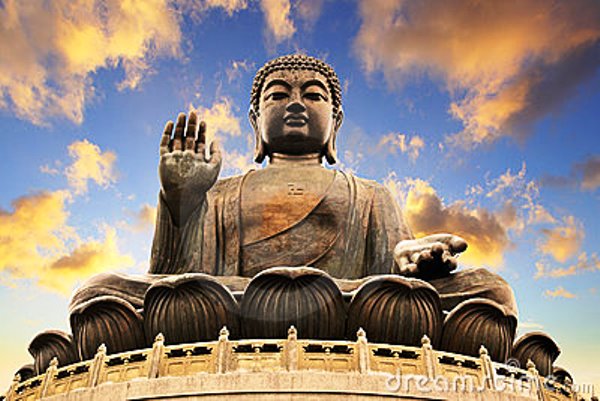
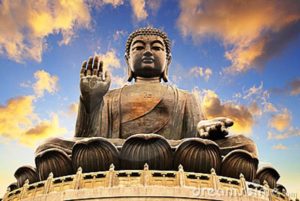







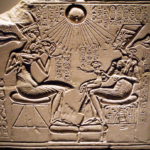
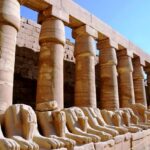
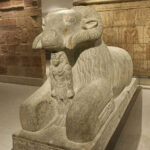

Nice one valyappa
@Anonymous Thanks.
Nice article, Sir.
The ideals of Buddhism are among the noblest. Attachment and desire leads to dukkha, and the Eight-fold path offers liberation. But we cannot adhere to it in this ‘modern’ world where we still have hunger and poverty!
The new layout is also nice, easy on the eye.
Thanks